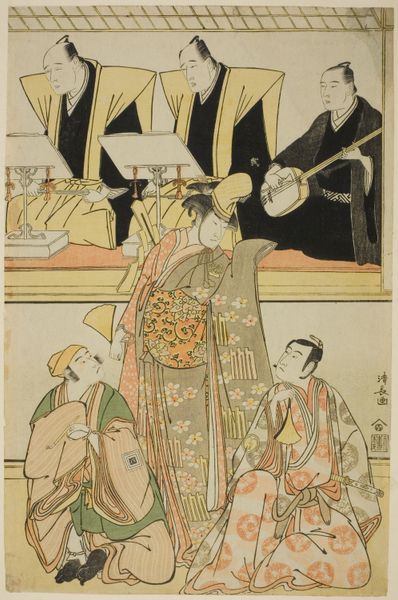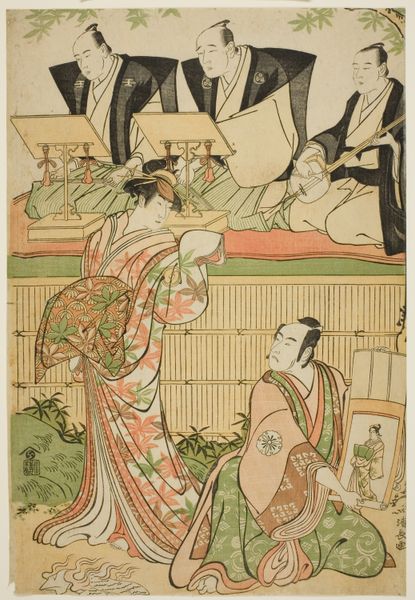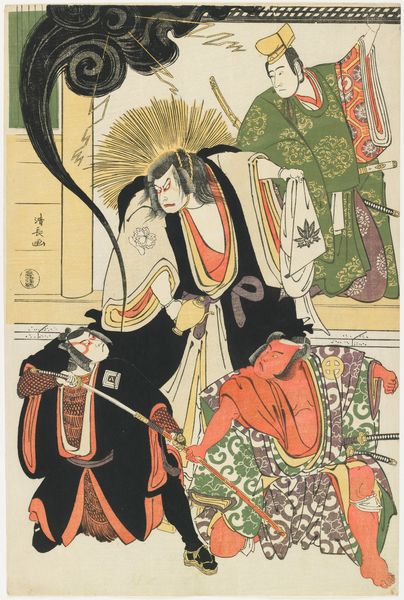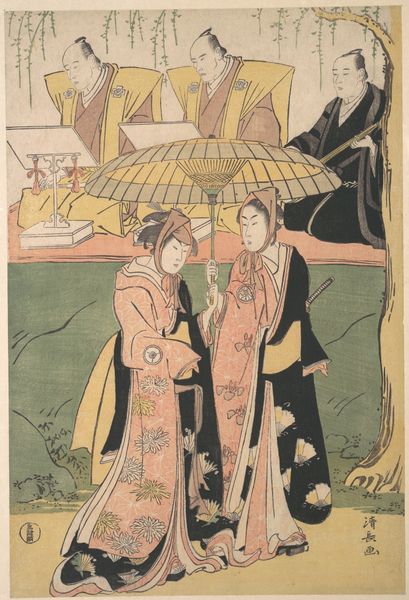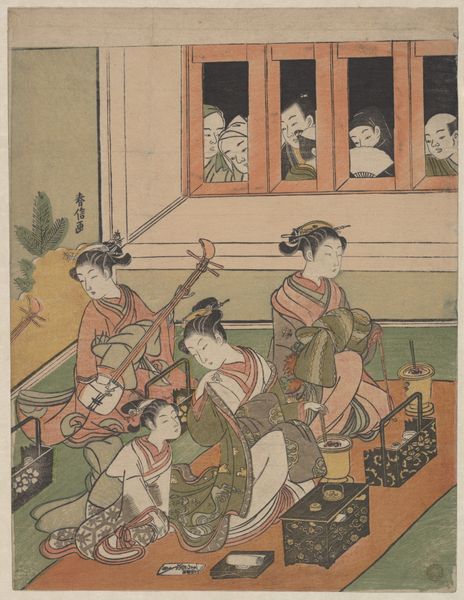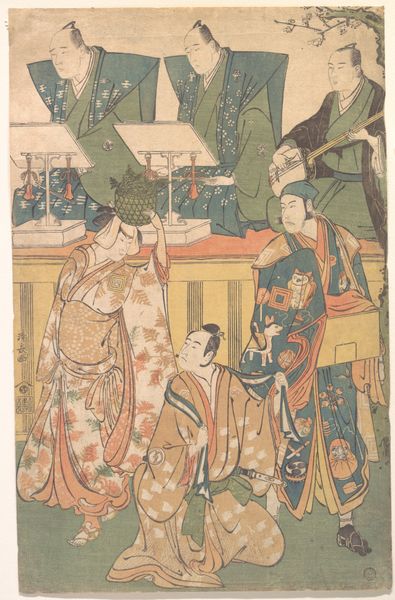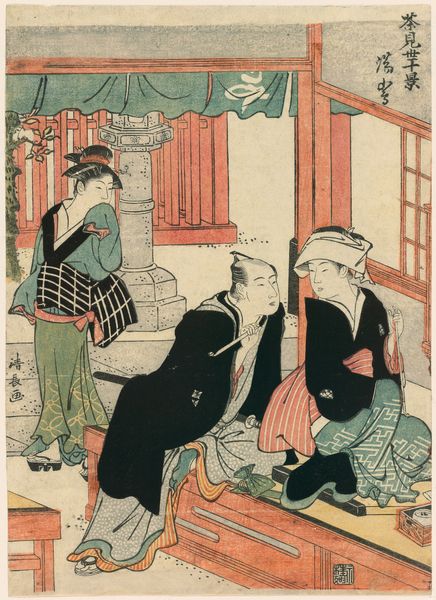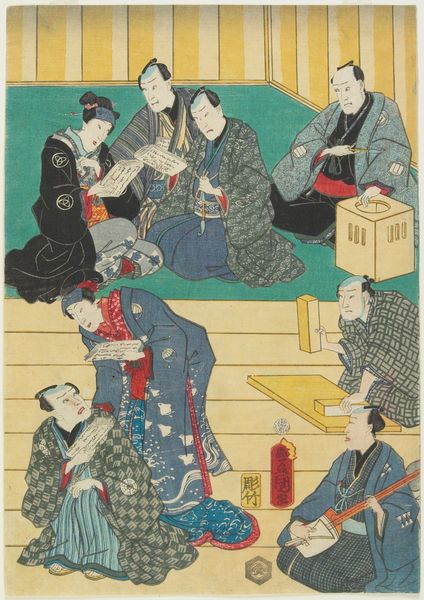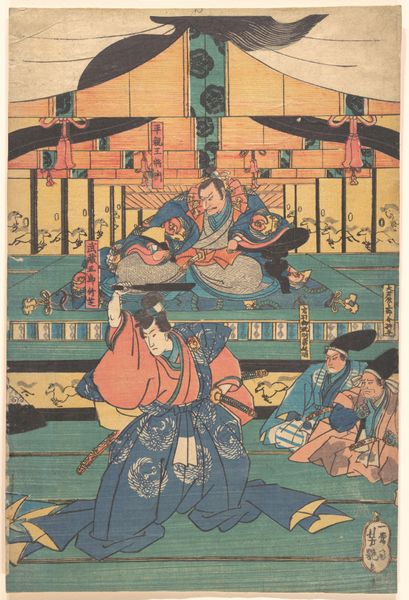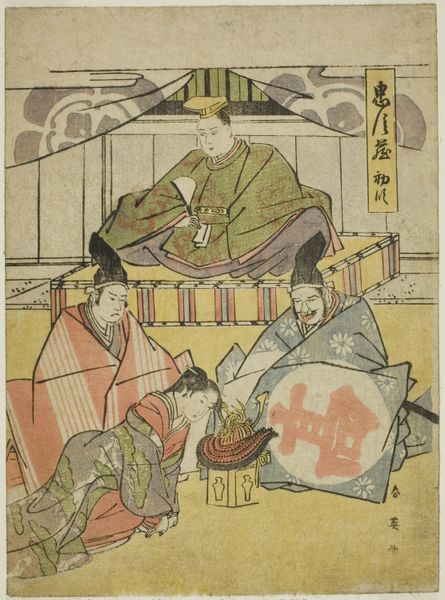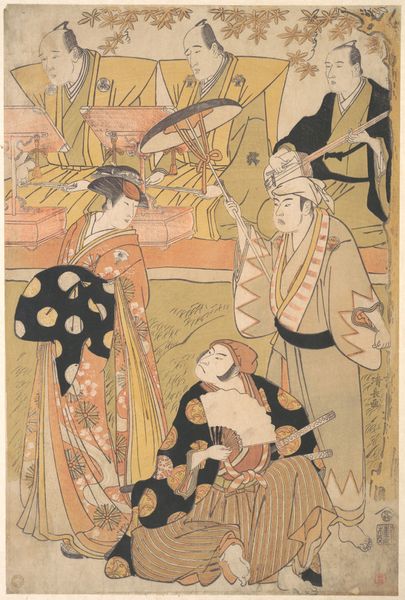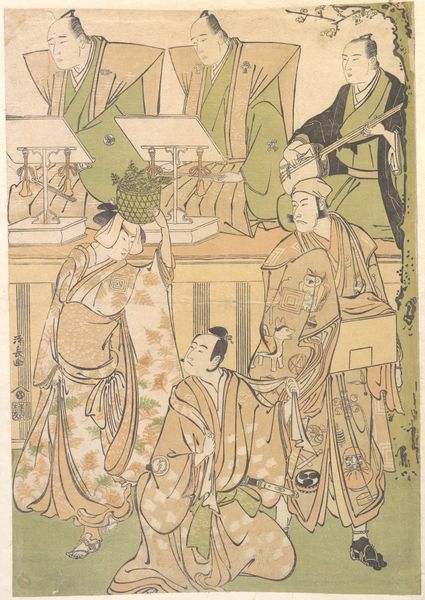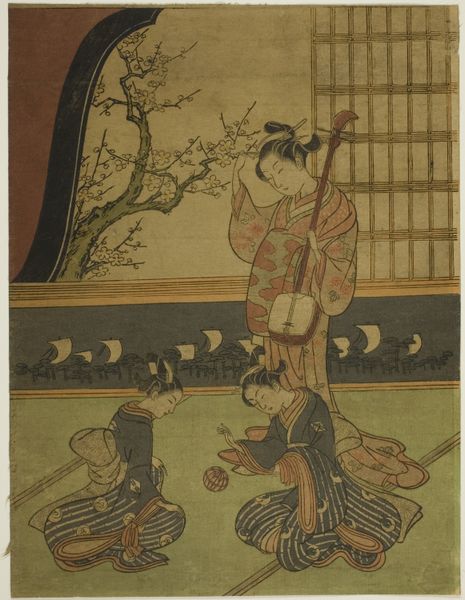
Actors Matsumoto Kōshirō IV as Azuma no Yoshirō (R) Possibly 1788
0:00
0:00
print, paper, ink, color-on-paper, woodblock-print
#
portrait
# print
#
ukiyo-e
#
japan
#
paper
#
ink
#
color-on-paper
#
woodblock-print
#
genre-painting
Dimensions: 14 1/2 × 9 3/8 in. (36.8 × 23.8 cm) (image, sheet, vertical ōban)
Copyright: Public Domain
This vertical ōban print was produced by Torii Kiyonaga and depicts actors in a kabuki scene. The print gives us insight into the cultural world of late 18th century Japan and the social function of kabuki theatre. This image creates meaning through its depiction of a theatrical performance. Kabuki served as a form of mass entertainment but it also reinforced social hierarchies, particularly in urban centers like Edo. Kiyonaga, as part of the Torii school, inherited a lineage of artists who specialized in portraying actors. This print would have circulated among kabuki fans, solidifying the actors' celebrity status, and reinforcing the cultural and economic significance of the kabuki theater in Japanese society. The print doesn't overtly critique social norms but rather celebrates established cultural institutions. Understanding this print fully requires research into the history of kabuki theatre, the social structure of Edo period Japan, and the role of the Torii school in promoting kabuki culture.
Comments
minneapolisinstituteofart over 1 year ago
⋮
The actors Matsumoto Kōshirō IV as Azuma no Yoshirō, Nakamura Nakazō I as Naniwa no Jirosaku, and Matsumoto Yonesaburō I as kamuro Tayori in the premiere of the play "Modori kago iro ni aikata" 戻駕色相肩 (A Harlot's Love in a Returning Palanquin), performed at the Nakamura Theater in the 11th lunar month of 1788.
Join the conversation
Join millions of artists and users on Artera today and experience the ultimate creative platform.
